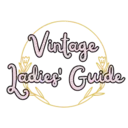
Embroidery 101: A Beginner's Guide

On the differences between digital and free motion embroidery, from Gathered’s guide to the latest embroidery machines:
At a very basic level, digital embroidery uses a computerized machine to automatically stitch your design onto the fabric. Free motion embroidery is created by using the machine's needle like a pen, so you move the fabric to ‘draw’ your pattern.
When deciding between the two, you’ll need to think about whether you want to design your work externally and have the machine do the embroidery or whether you want to control the embroidery stitches by hand.
This guide is a comprehensive one for choosing the best embroidery machine for beginners. It covers the basics of digital and free motion embroidery, along with recommendations for eight different machines, ranging from affordable options for beginners to more advanced models for experienced users.
Some key points to consider: understand the difference between the types of embroidery and choose the one that aligns with your creative style. Consider factors like stitch options, embroidery area size, and additional modern features like automatic threaders and USB ports, and set a budget so that you can choose a machine that fits your needs and financial constraints. Look for reputable brands like Brother, Singer, and Janome. And think about factors like machine weight, ease of use, and available accessories.
You can select the best embroidery machine to kickstart your creative endeavors by carefully considering the aforementioned factors. With modern technology, we have a chance to revive and rethink a vintage tradition that can still certainly be done by hand. Today’s embroidery machines offer new possibilities, however, particularly for beginners who want to tackle more ambitious projects.
Archaeological findings from 30,000 BC reveal the earliest evidence of embroidery, with hand-stitched clothing and boots showcasing the ancient art of needlework. It is a craft that has never really disappeared from tradition, and is worth preserving.